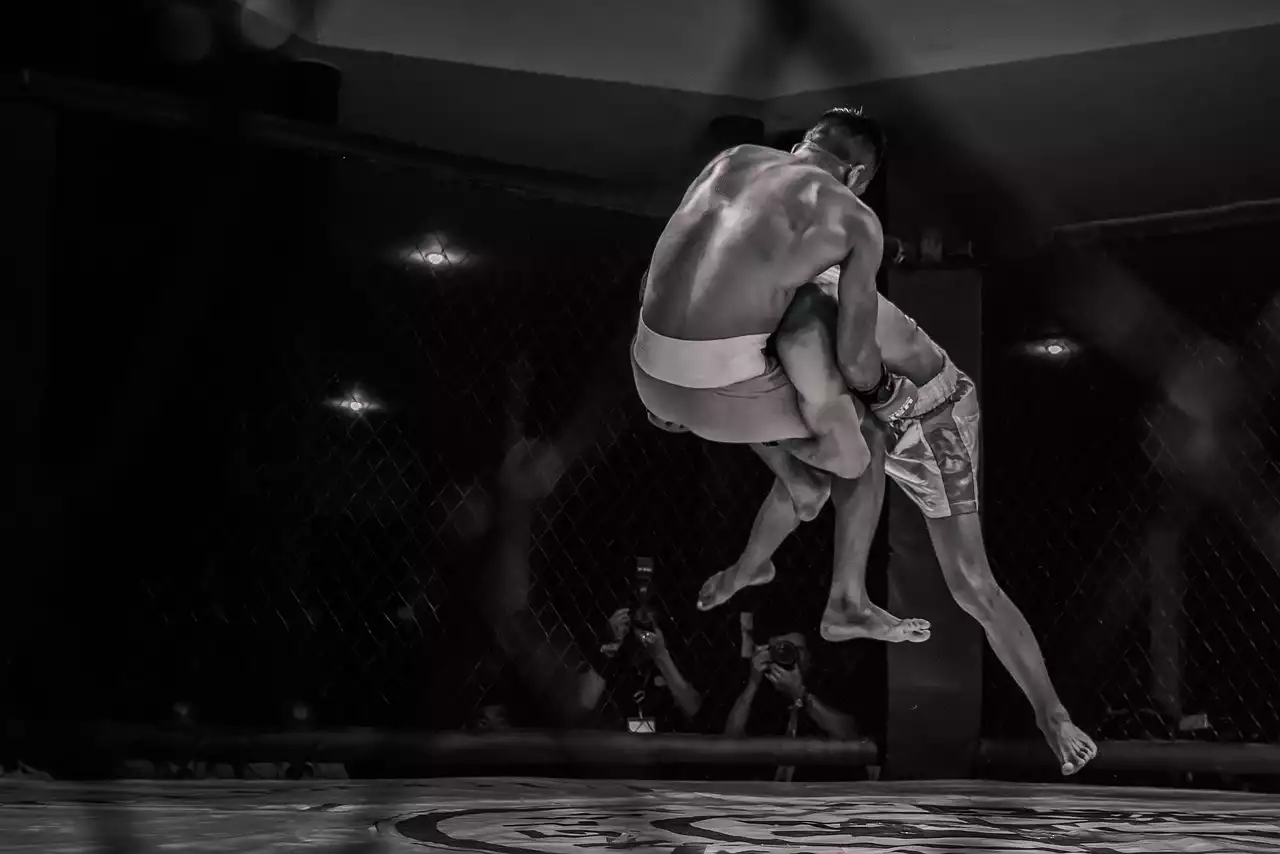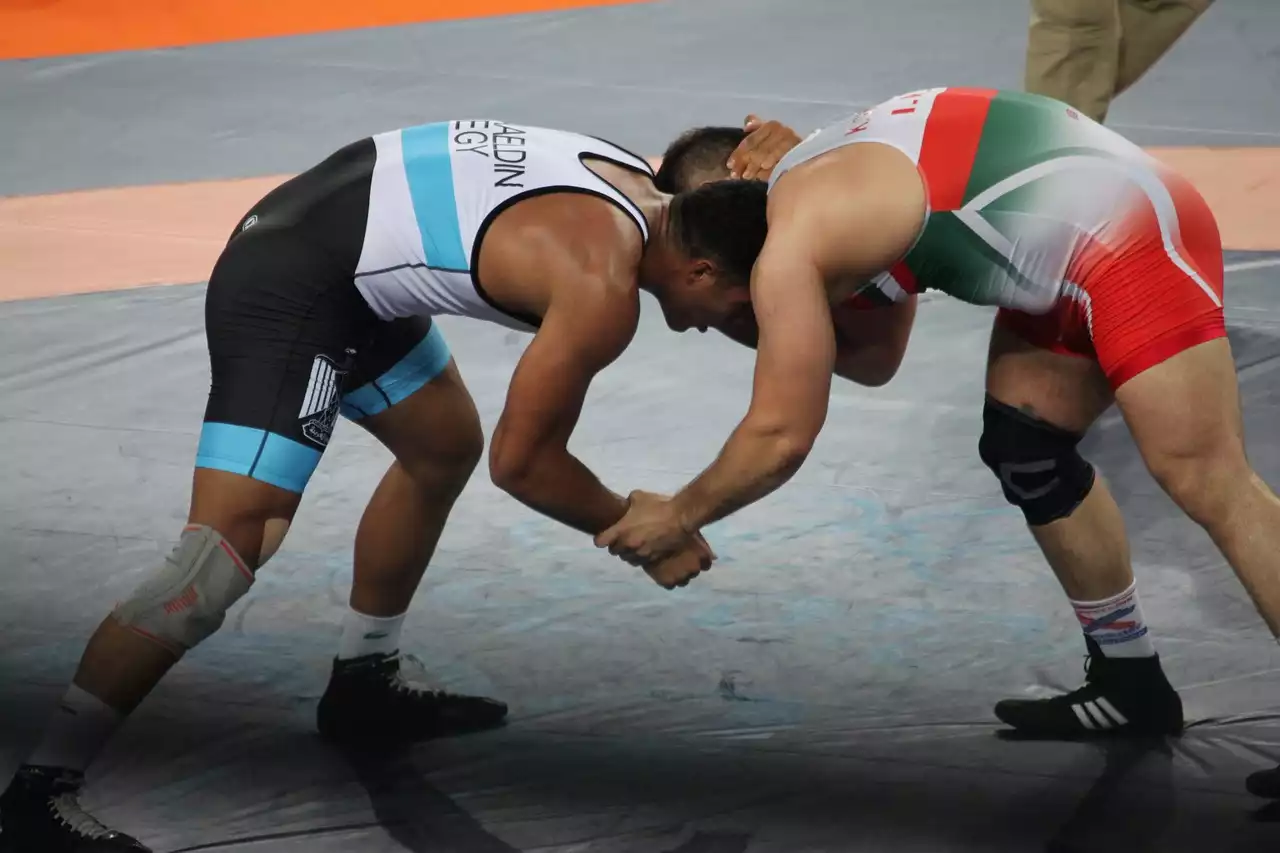Benefits of Cross-Training
Cross-training involves incorporating different types of physical activities into your training regimen. This can include strength training, cardio and endurance training, flexibility and mobility training, and more. The benefits of cross-training in wrestling are numerous and can help enhance your performance in a variety of ways.
Improved Strength and Power
Cross-training can help improve your overall strength and power, which are crucial for success in wrestling. Strength training, in particular, can help you build muscle and improve your ability to lift, push, and pull your opponents. This can help you gain an advantage on the mat and make it easier to execute your moves.
Enhanced Cardiovascular Endurance
Wrestling is a high-intensity sport that requires a lot of cardiovascular endurance. Cross-training can help improve your aerobic and anaerobic capacity, allowing you to perform at a higher level for longer periods of time. This can help you maintain your energy levels throughout a match and avoid fatigue.
Reduced Risk of Injury
Cross-training can also help reduce the risk of injury in wrestling. By incorporating a variety of activities into your training regimen, you can improve your overall fitness and reduce the strain on specific muscle groups. This can help prevent overuse injuries and ensure that you're able to perform at your best without risking injury.
Types of Cross-Training for Wrestling
There are many different types of cross-training activities that can benefit wrestlers. Here are some of the most effective options:
Strength Training
Strength training is essential for building muscle and improving overall strength and power. Some of the most effective exercises for wrestlers include squats, deadlifts, bench presses, and pull-ups. These exercises can help improve your ability to lift, push, and pull your opponents, which can give you a significant advantage on the mat.
Cardio and Endurance Training
Cardio and endurance training are crucial for improving your cardiovascular endurance and stamina. Some of the best cardio exercises for wrestlers include running, swimming, and cycling. These activities can help improve your aerobic and anaerobic capacity, allowing you to perform at a higher level for longer periods of time.
Flexibility and Mobility Training
Flexibility and mobility training are important for maintaining a full range of motion and reducing the risk of injury. Yoga, Pilates, and mobility drills are all effective options for improving your flexibility and mobility. These activities can help you move more easily on the mat and perform your moves with greater ease and efficiency.
Mental Training
Mental training is an often-overlooked aspect of cross-training, but it can be incredibly beneficial for wrestlers. Activities like meditation, visualization, and goal-setting can help improve your focus, concentration, and mental toughness. These skills can be essential for performing at your best in high-pressure situations.
Importance of Strength Training in Wrestling
Strength training is one of the most important types of cross-training for wrestlers. It can help improve your overall strength and power, which are crucial for success in the sport. Here are some of the key benefits of strength training for wrestlers:
Improved Muscle Mass
Strength training can help you build muscle mass, which can improve your ability to lift, push, and pull your opponents. This can give you a significant advantage on the mat and make it easier to execute your moves.
Increased Strength and Power
Strength training can also help improve your overall strength and power. This can help you gain an advantage over your opponents and make it easier to control them on the mat. It can also help you execute moves more efficiently and with greater force.
Enhanced Injury Prevention
Strength training can help improve your overall fitness and reduce the risk of injury. By strengthening your muscles and improving your overall fitness, you can reduce the strain on specific muscle groups and prevent overuse injuries.
Benefits of Cardio and Endurance Training for Wrestling
Cardio and endurance training are also important components of cross-training for wrestlers. These activities can help improve your cardiovascular endurance and stamina, which are crucial for success in the sport. Here are some of the key benefits of cardio and endurance training for wrestlers:
Improved Aerobic Capacity
Cardio and endurance training can help improve your aerobic capacity, which is essential for maintaining your energy levels throughout a match. This can help you perform at a higher level for longer periods of time and avoid fatigue.
Enhanced Anaerobic Capacity
Cardio and endurance training can also improve your anaerobic capacity, which is essential for performing high-intensity bursts of activity. This can help you execute explosive moves and maintain your strength and power throughout a match.
Reduced Risk of Injury
Cardio and endurance training can also help reduce the risk of injury in wrestling. By improving your overall fitness and cardiovascular endurance, you can reduce the strain on specific muscle groups and prevent overuse injuries.
Flexibility and Mobility Training for Wrestling
Flexibility and mobility training are important for maintaining a full range of motion and reducing the risk of injury in wrestling. Here are some of the key benefits of flexibility and mobility training for wrestlers:
Improved Range of Motion
Flexibility and mobility training can help improve your overall range of motion, which is essential for executing moves with precision and control. This can also help you move more easily on the mat and avoid injury.
Reduced Risk of Injury
Flexibility and mobility training can also help reduce the risk of injury in wrestling. By improving your overall flexibility and mobility, you can reduce the strain on specific muscle groups and prevent overuse injuries.
Improved Recovery
Flexibility and mobility training can also help improve your recovery time after a match or training session. By improving your overall flexibility and mobility, you can reduce muscle soreness and stiffness, allowing you to recover more quickly and get back to training sooner.
Nutrition for Cross-Training in Wrestling
Nutrition is an essential component of cross-training in wrestling. Proper nutrition can help fuel your workouts, improve your recovery time, and enhance your overall performance on the mat. Here are some tips for optimizing your nutrition for cross-training in wrestling:
Eat a Balanced Diet
Eating a balanced diet that includes plenty of lean protein, complex carbohydrates, and healthy fats is essential for fueling your workouts and optimizing your performance. Make sure to include plenty of fruits and vegetables in your diet as well, as these can provide essential vitamins and minerals.
Stay Hydrated
Staying hydrated is crucial for maintaining your energy levels and preventing fatigue. Make sure to drink plenty of water throughout the day, especially before, during, and after your workouts.
Fuel Up Before and After Workouts
Eating a snack or small meal before and after your workouts can help ensure that your body has the fuel it needs to perform at its best. Make sure to choose foods that are high in protein and carbohydrates to help replenish your energy stores and support muscle recovery.
Sample Cross-Training Workout Plan for Wrestlers
Here's a sample cross-training workout plan for wrestlers that incorporates strength training, cardio and endurance training, and flexibility and mobility training:
Day 1: Strength Training
- Warm-up: 5 minutes of light cardio (jogging, jumping jacks, etc.)
- Squats: 3 sets of 8-10 reps
- Deadlifts: 3 sets of 8-10 reps
- Bench Press: 3 sets of 8-10 reps
- Pull-ups: 3 sets of as many reps as possible
- Cool-down: 5 minutes of stretching
Day 2: Cardio and Endurance Training
- Warm-up: 5 minutes of light cardio (jogging, jumping jacks, etc.)
- Running: 30 minutes at a moderate pace
- Swimming: 20 minutes of laps
- Cool-down: 5 minutes of stretching
Day 3: Flexibility and Mobility Training
- Warm-up: 5 minutes of light cardio (jogging, jumping jacks, etc.)
- Yoga or Pilates: 30 minutes of stretching and mobility exercises
- Cool-down: 5 minutes of stretching
Common Mistakes to Avoid When Cross-Training for Wrestling
While cross-training can be incredibly beneficial for wrestlers, there are some common mistakes to avoid. Here are some of the most important ones:
Overtraining
Overtraining can be a common problem for wrestlers who incorporate too many different activities into their training regimen. Make sure to give your body enough time to rest and recover between workouts to avoid burnout and injury.
Neglecting Recovery
Recovery is an essential component of cross-training in wrestling. Make sure to incorporate plenty of rest days and recovery activities into your training regimen to prevent injury and optimize your performance.
Not Focusing on Specific Needs
It's important to focus on the specific needs of wrestling when cross-training. Make sure to incorporate activities that will improve your strength, endurance, flexibility, and mobility, and avoid activities that won't directly benefit you on the mat.









